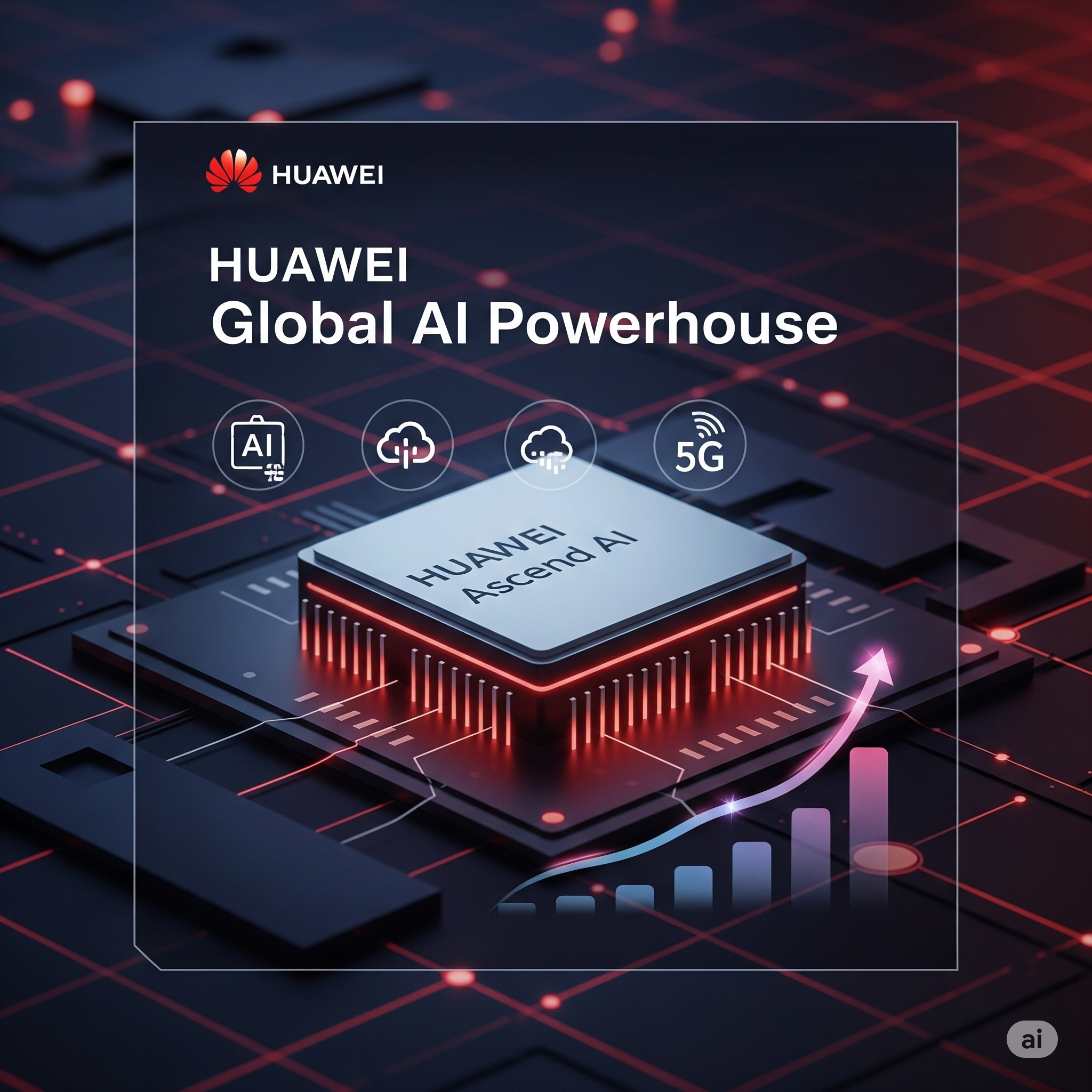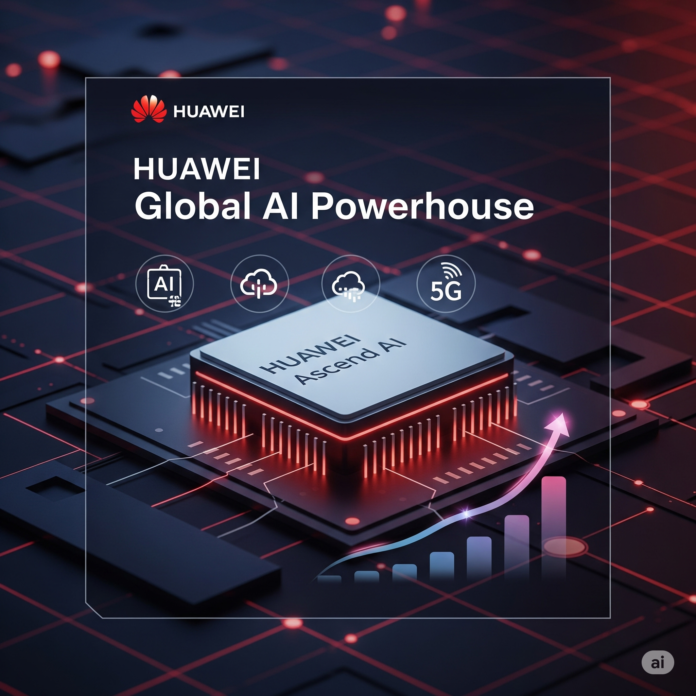
A few years ago, Huawei was mostly known for building mobile networks and making smartphones. Then came the U.S. trade restrictions, cutting the company off from key technologies. Most expected Huawei to struggle.
Instead, they doubled down — and today, Huawei is fast becoming one of the most important players in China’s artificial intelligence (AI) race.
🧭 From Telecoms to Everything-AI
Back when U.S. sanctions first hit in 2019, Huawei faced a choice: back down or build their own tech from scratch. They chose the second option — and it’s paying off.
Now, they’re doing a lot more than just telecom gear. Huawei has stepped into nearly every corner of the AI world, from:
- Designing their own chips
- Building massive cloud systems
- Running AI training clusters
- Creating enterprise software and infrastructure
In short, they’ve become the tech partner that many Chinese companies now rely on — especially in a world where access to U.S. hardware is uncertain.
🧠 Meet Huawei’s Homegrown AI Chips: Ascend
The center of Huawei’s AI story is the Ascend chip series. These processors are designed specifically for AI tasks like machine learning and model training.
- Ascend 910C and 910B: Already in use across China. Huawei plans to ship around 800,000 of these chips in 2025.
- Ascend 910D: A newer version in the works, using stacked chip designs for more power.
Now, these chips aren’t quite as powerful or efficient as Nvidia’s high-end GPUs (like the H100), but Huawei is closing the gap—and fast.
🏗️ Huawei’s Secret Weapon: Scale, Not Just Speed
Instead of trying to make one chip that beats Nvidia’s, Huawei took a different approach: build massive clusters of chips that work together.
Enter the CloudMatrix 384 — a supercomputer-style system that links 384 Ascend chips into one powerful AI engine.
It’s designed to run large language models (like the ones powering ChatGPT) and other complex tasks that require huge amounts of computing. It may use more energy than Nvidia’s systems, but it can compete in sheer performance when scaled properly.
💸 Big Bets on Research, Not Just Sales
Huawei is serious about innovation. Every year, they’re spending around $25 billion on research and development — and a big chunk of that goes toward fundamental science and engineering.
They’re not just building products for today. They’re laying the groundwork for tomorrow — whether it’s new chip architectures, smarter cloud networks, or next-gen AI software.
🌍 Why This Matters
Huawei’s rise in AI isn’t just about competing with Nvidia or escaping sanctions. It’s about giving China a tech ecosystem that doesn’t rely on foreign suppliers.
For companies in sensitive industries — like finance, telecom, healthcare, and even government — that kind of independence is a big deal.
More and more Chinese companies (including giants like Alibaba, Tencent, and Baidu) are now experimenting with Huawei’s chips, especially for running AI models (known as “inference”). For the time being, many still train those models on Nvidia hardware — but Huawei is clearly aiming to cover both ends.
🔮 What’s Next?
Huawei is playing the long game. They’re not trying to beat Nvidia overnight — but they are building the pieces of a full-stack AI system: from chips to cloud, software to servers.
And while they still face technical hurdles, their focus on integration, scale, and long-term strategy is helping them stand out in a crowded, competitive field.
💬 Final Thoughts
Huawei’s story is no longer about survival — it’s about reinvention.
They took one of the toughest hits a tech company can face — being locked out of global supply chains — and used it as a springboard. Now, they’re building the tools, platforms, and systems that could define China’s AI future.
They’re not just catching up. In many ways, they’re rewriting the rules.


